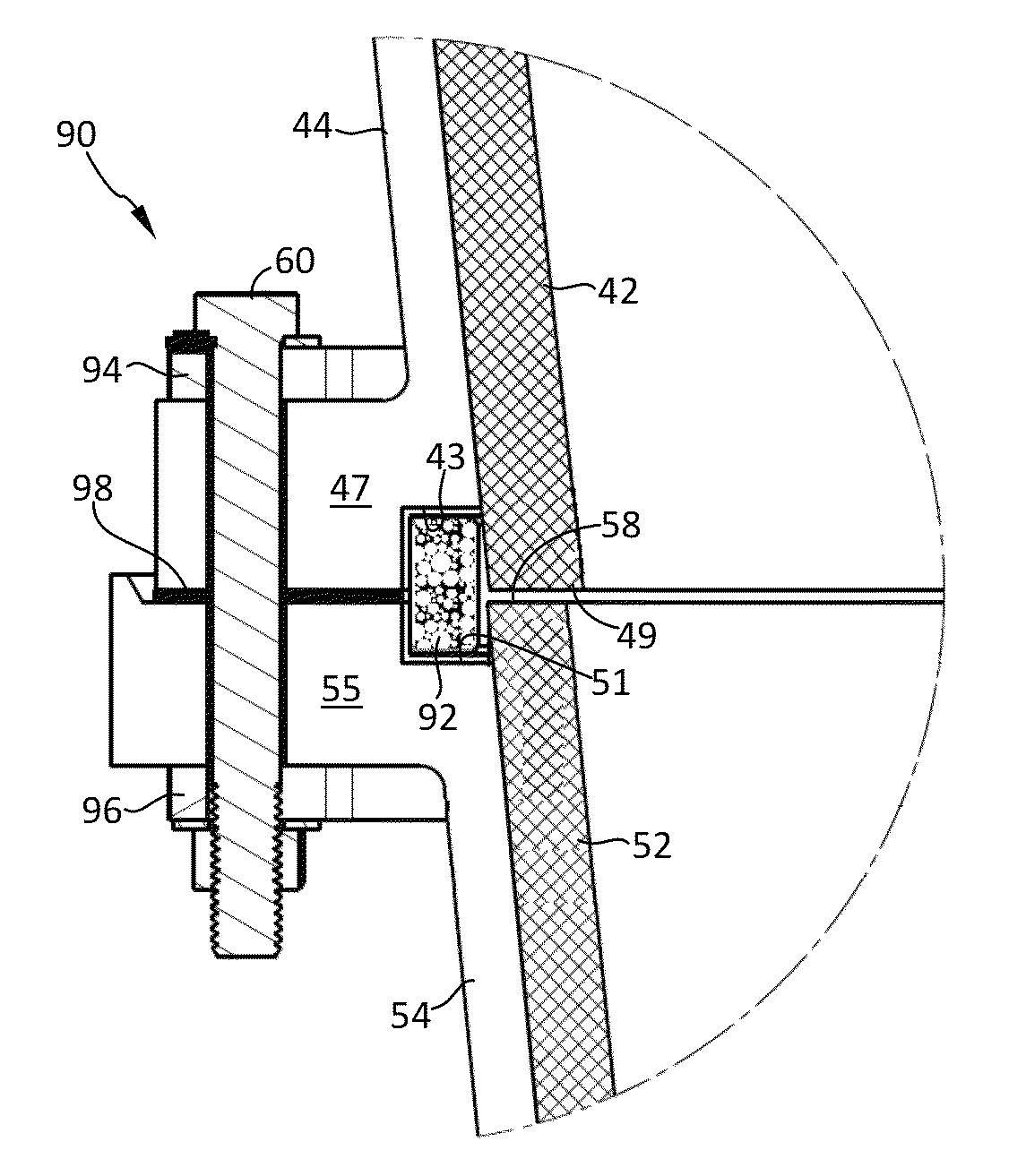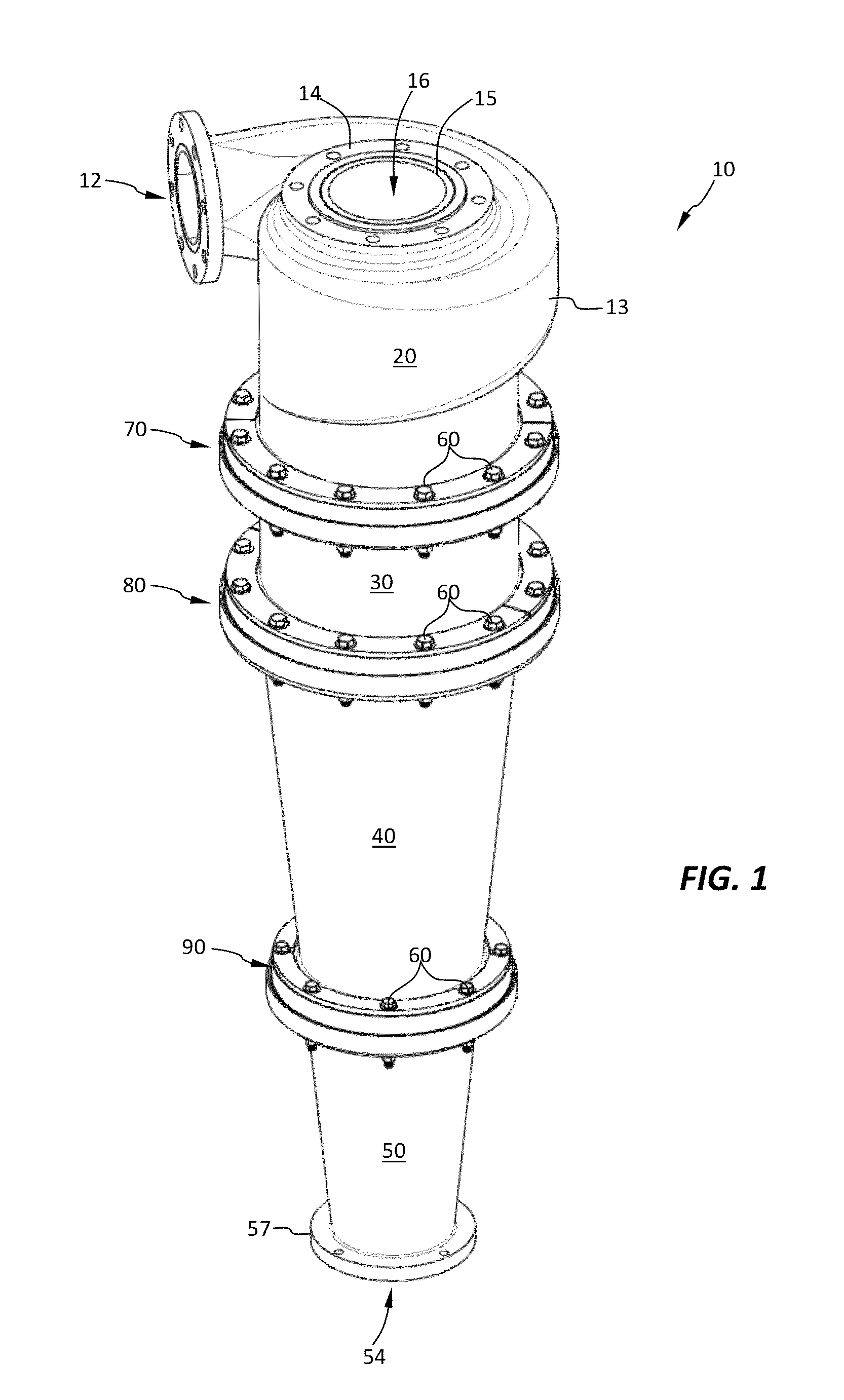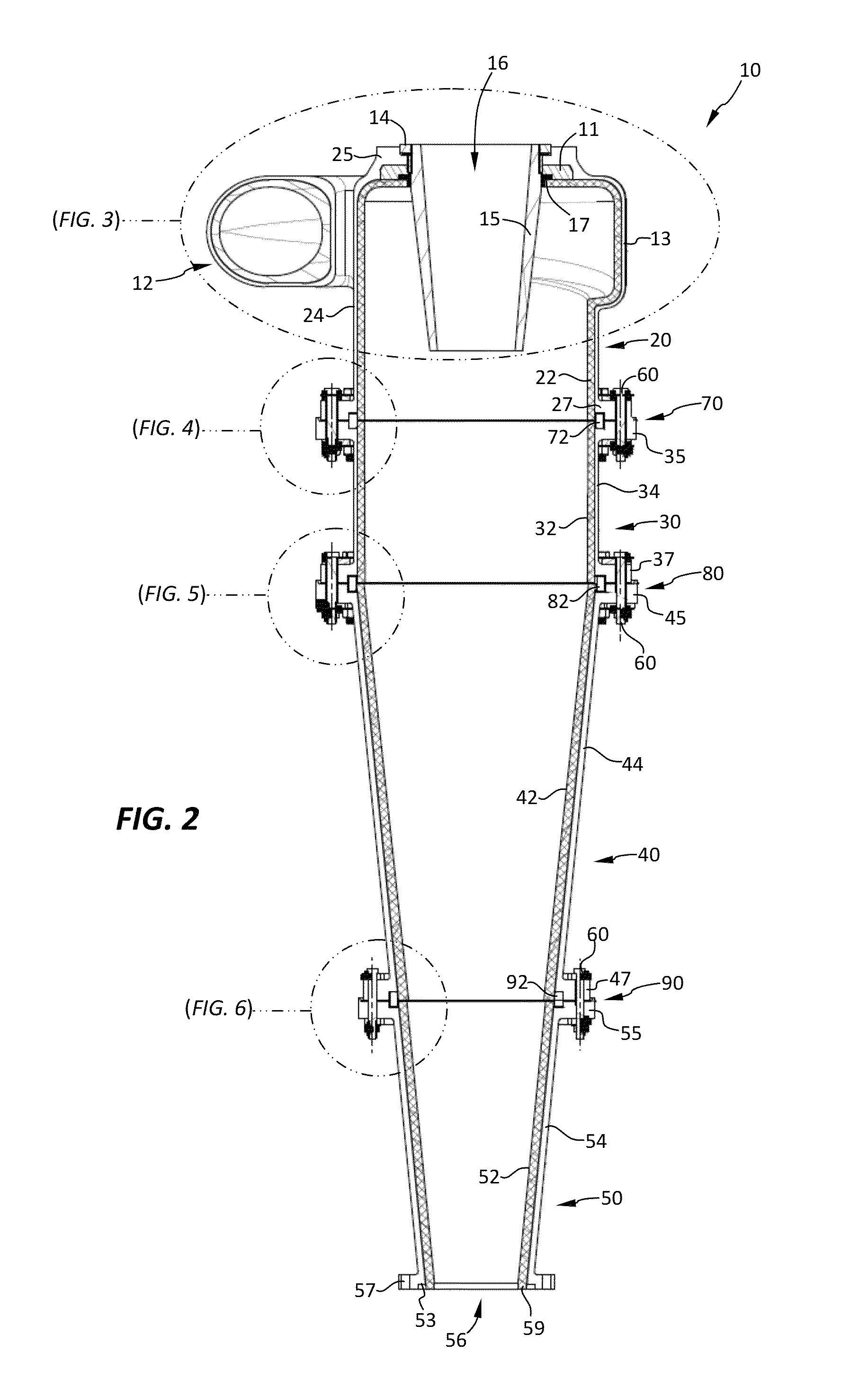Energy diffusing wear ring and methods thereof
a technology of energy diffusion and wear rings, applied in the direction of liquid fuel engines, separation processes, filtration separation, etc., can solve the problems of elastomeric liners having a short service life, premature wear of less abrasion-resistant exterior steel housings, and increased wear. it can and prevent the erosion of joints and connections
- Summary
- Abstract
- Description
- Claims
- Application Information
AI Technical Summary
Benefits of technology
Problems solved by technology
Method used
Image
Examples
Embodiment Construction
[0047]FIGS. 1-6 depict a hydrocyclone 10 according to some embodiments. The hydrocyclone 10 comprises an inlet 12 for delivery of a slurry feed to be separated. Inlet 12 is part of an inlet head 20 located at an upper region of the hydrocyclone 10. Below the inlet head 20 may be attached one or more cylinders 30 and / or cone sections 40, 50. For example, a first cone section 40 and a second cone section 50 may be provided below a single cylinder 30 as shown. The cone sections 40, 50 may taper down as they approach a lower region of the hydrocyclone 10 as shown.
[0048]In use, slurry fines entering the inlet 12 traverse a volute portion 13 and eventually exit an overflow exit port 16 defined by a vortex finder 15. Conversely, heavies and course particles in the slurry feed exit the hydrocyclone 10 through an underflow exit port 56 located in or otherwise defined by a bottommost cone section 50. The underflow exit port 56 may comprise a flange 57 or equivalent structure for connecting to...
PUM
| Property | Measurement | Unit |
|---|---|---|
| tangential velocity | aaaaa | aaaaa |
| tangential velocity | aaaaa | aaaaa |
| diameter | aaaaa | aaaaa |
Abstract
Description
Claims
Application Information
 Login to View More
Login to View More - R&D
- Intellectual Property
- Life Sciences
- Materials
- Tech Scout
- Unparalleled Data Quality
- Higher Quality Content
- 60% Fewer Hallucinations
Browse by: Latest US Patents, China's latest patents, Technical Efficacy Thesaurus, Application Domain, Technology Topic, Popular Technical Reports.
© 2025 PatSnap. All rights reserved.Legal|Privacy policy|Modern Slavery Act Transparency Statement|Sitemap|About US| Contact US: help@patsnap.com



